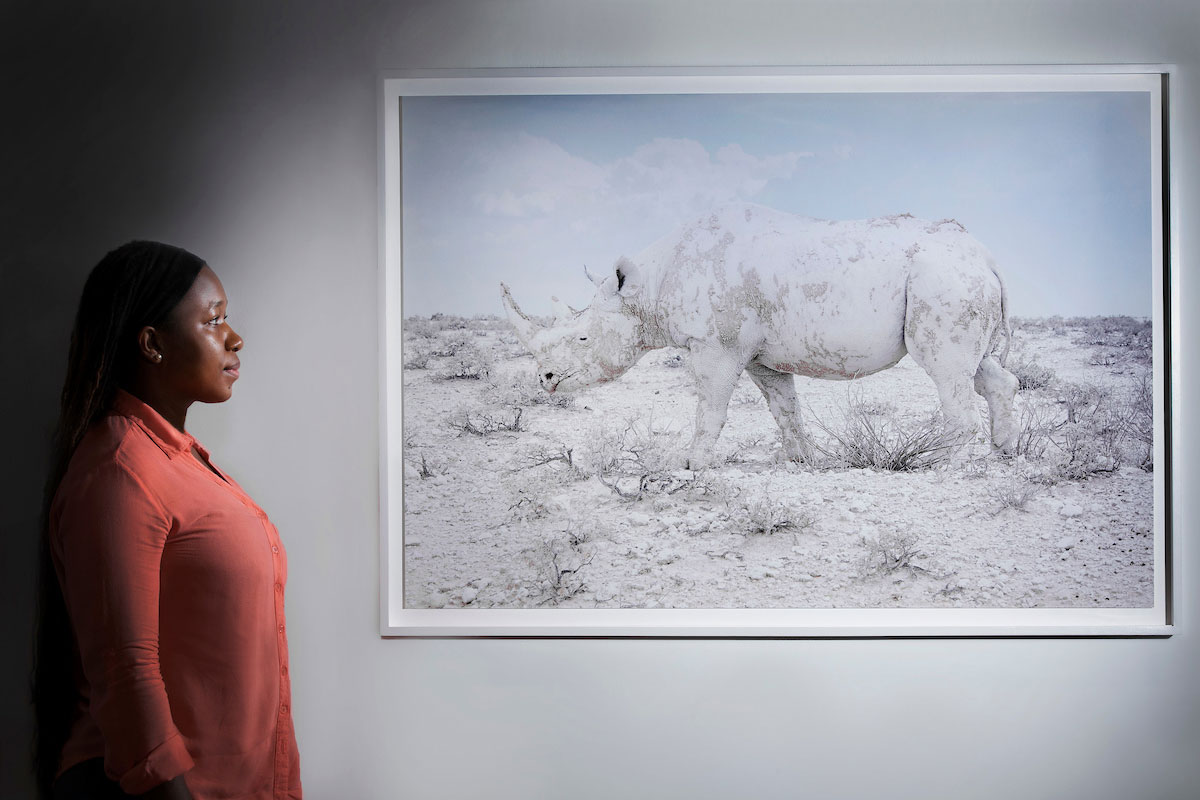"We will get this right.”

Portrait by Brianne Lehan and Lyon Duong/UF Photography. Artwork: "White Rhino, Namibia" by Maroesjka Lavigne from the series Land of Nothingness, 2015, courtesy of Robert Mann Gallery, New York
Zoliswa "Zoe" Nhleko
Doctoral candidate, UF/IFAS School of Natural Resources and Environment; Wildlife Ecology and Conservation
A junior scientist with South African National Parks, Nhleko uncovers how stress from poaching affects white rhino populations. What she discovers can help other threatened species.
Rhino mysteries:
“There’s lots of general descriptive information about rhinos — they walk around and nibble on this and that. But we are missing some key elements that will help us save them. We don’t know the nitty gritty,” she said. One key question is how they choose their habitat. It’s not clear why they prefer the southern part of Kruger National Park over some of the other habitats available in the northern parts of the park. “It’s like there is a line they will not cross. Once we understand what they are looking for, then we may be able to move them from high-poaching areas into suitable habitats in safer areas.”
Fear factor:
Figuring out what scares white rhinos could help protect them. “If we know what stresses them, we could manipulate the environment and make it unsuitable in a way that gets them out of danger, because by themselves, they’re not doing it. They’re not scared of people, but they should be.”
Poaching is more than a wildlife problem:
“What are the social issues that are making people want to do these things? It’s not just a conservation problem. It’s a social problem, it’s a political problem. It’s time we all get together and come up with solutions. More than anything, we need to be thinking outside of our own fields.”
How do you stay optimistic?
“It’s the possibility that we might actually figure something out and save the species. It’s been done before. They’ve saved rhinos from less than 100 individuals left. They weren’t dealing with the same rampant poaching and climate change and degradation of habitat, but it has been done before. If we can learn from what was done then, what we know now and the new knowledge we are gathering, we could save other species from extinction.”
Read more about Nhleko's rhino conservation work.
This is part of a series highlighting people at the University of Florida working to protect our well-being and the health of the planet, paired with works from the Harn Museum of Art exhibition “The World to Come: Art in the Age of the Anthropocene.” See more at http://news.ufl.edu/articles/2018/12/creating-the-world-to-come.php.